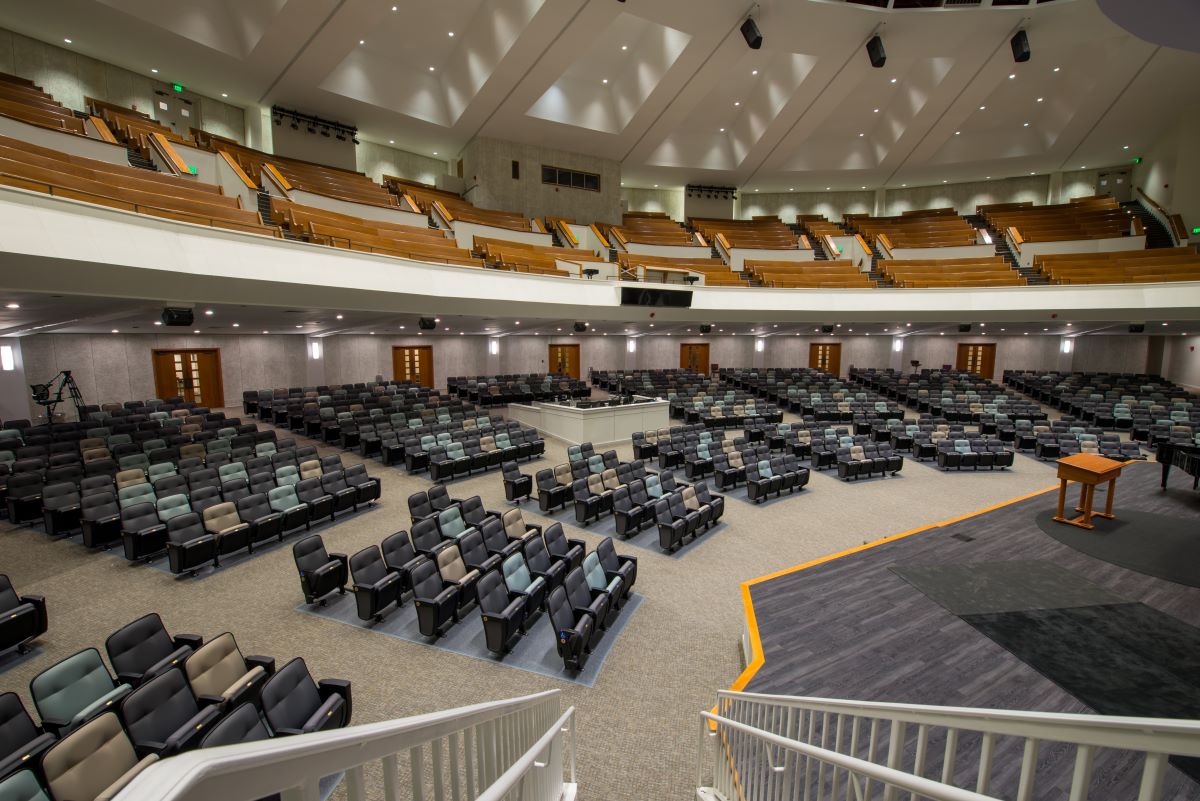Did you know that during the first millennium, congregants typically stood or moved freely during services, with only a few benches or stone seats along the walls for the elderly or infirm?
The introduction of pews in the 14th century (gaining popularity in the 15th century) replaced stone benches with fixed wooden benches with backs, standardizing the expectation that congregants would remain seated and stationary during worship.
Pews were arranged in rows facing the pulpit or altar, which reformed the worship experience into a more formal, presentation-oriented event, fostering a sense of order and uniformity, contrasting with earlier, more fluid arrangements.
The widespread adoption of pews led to the practice of pew rentals, where families or individuals paid for reserved seating. This system generated revenue for churches but also introduced social hierarchies within the congregation, as wealthier members secured better seats. Over time, the pay-per-pew system was phased out in favor of open, free seating, reflecting evolving values around equality and community within worship spaces.
By the 20th century, pews became the dominant and expected form of church seating, shaping the architecture and atmosphere of sanctuaries across Europe and America. Pews came to symbolize tradition and reverence, making a strong statement about the sacredness and distinctiveness of the worship environment.
However, pews have limitations. Fixed pews reduced flexibility in how space could be used, limiting the ability to reconfigure the sanctuary for different events or more interactive worship styles.
As traditional churches update or renovate the sanctuary and new churches are built, today’s question is: traditional pews or stadium seating?
Stadium Seating With a Pew Aesthetic
“Stadium seating” might suggest the packed-in-like-sardines hard plastic seats found in outdated sports stadiums. However, the term “stadium seating” (also called “auditorium seating”) refers solely to the stepped arrangement of seats. While most closely associated with sports stadiums, this seating style is also typical in movie theaters, lecture halls, and places of worship.
Much like traditional pews, auditorium seating can provide a sense of comfort and connection with design options that enhance—not detract—from the worship experience.
Here are some reasons why auditorium seating makes sense for today’s places of worship.
Focus on the Sermon—Not the Seat
Few people think traditional wood pews are comfortable, even with a padded seat cushion. Padding on both the seat and back in stadium seating means parishioners can focus on the message instead of fidgeting and moving to find a comfortable position.
Pass the Peace With Folding Seats
Traditional pews leave little legroom for moving about. Getting past those already seated to get to the center of a pew is awkward. When standing, the cramped space inhibits movement at times when parishioners should feel closest to each other. In auditorium seating, when congregants stand, the seat bottom automatically folds up, offering more room for movement and parishioner interaction.
Maximum Seating Without Empty Spaces
In a traditional pew arrangement, congregants tend to spread out, placing coats and purses in the space next to them. Today’s auditorium worship seating provides each person with an individual seat, making it easier to find a seat, as well as increasing sanctuary capacity.
Upholding the Sense of Tradition With Modern Amenities
Laminate wood veneers on seat backs and flip-up armrests and stately muted fabrics and metal finishes emulate the look and feel of old-style pews, effortlessly complementing the sense of tradition most often found in older churches.
What’s not found in traditional pews are amenities that make it easier for those who might not feel comfortable worshiping in person. Armrests make it easier for seniors and those with creaky joints to stand more easily.
ADA-compliant stadium seating can even go as far as offering transfer arms and swing-away aisle panels for those with limited mobility and bariatric chairs for those who find traditional seating restrictive. Seats can also be installed on movable bases, which allows them to be removed to make space for a wheelchair.
Worship Accessories: Multiple Options for Customization
Every place of worship has different needs. To enhance the experience, added elements can range from simple book boxes placed under or on the back of each seat to caddies that accommodate several books, with a place for envelope and pencil holders and communion items. You might also find a cup holder option that makes it easier for attendees to enjoy a cup of coffee or water during worship. Lastly, concealed floor LED lighting and aisle lights improve accessibility and safety.
Safety: A Critical Consideration
To ensure the safety of all who enter, consult with a qualified seating layout engineer who can make the most of your space and ensure the safety of attendees. They will address several important issues, such as fire-resistant materials and proper seating spacing, ensuring egress for quick and efficient evacuation, should the need arise.
Throughout the Rest of the Building
It’s also essential to consider the rest of the building. Many worship centers offer Sunday school and teen ministries, adult education and scripture study to childcare, a café, gathering and social areas lectures, and community events.
Unfortunately, many of these spaces are an afterthought regarding appropriate, versatile, and flexible seating coordinated with the rest of the facility. For these spaces, consider lightweight, portable seating that can be reconfigured easily.
Chairs that can be ganged ensure perfect rows of seating but can also be used individually for scattered seating. For those with more space than budget, wheeled storage carts make set-up, tear-down, and transfer between spaces quick and straightforward.
The Big Decision
Don’t rely on catalogs and websites. A qualified worship seating provider will gladly present samples of finishes, laminates, seat fabrics, and more to your elders, deacons, church council or other decision-makers.
Perhaps a millennium from now, historians will refer to auditorium-style seating as outdated. Until then, be assured that today’s worship seating is an excellent alternative to traditional pews—or stone benches!
Alex McCallum is the Worship/PAC product manager at Irwin Seating Company, a family-owned leader in worship, PAC, education, cinema, concert and sports entertainment seating with 117 years of experience, coast-to-coast dealer support, and turnkey service from design to install, www.irwinseating.com.













